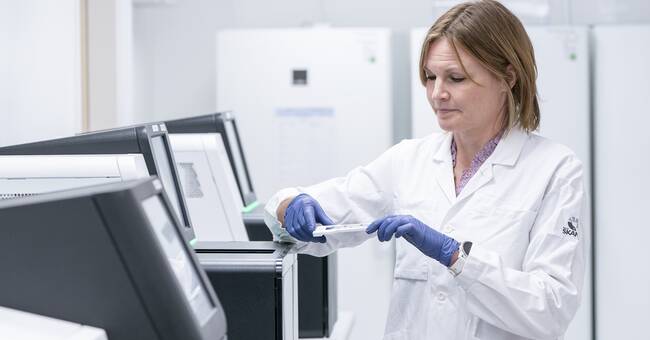The staff at the Center for Molecular Diagnostics in Lund has worked intensively in recent weeks to build up the analysis capacity.
Sequencing machines already exist, but usually it is not genetic material from viruses, but from bacteria and human cells, that is usually mapped here.
A first challenge has been to obtain the necessary material.
- There has been a huge rush for all types of reagents and plastic materials, because everyone has to sequence, says section manager Sofia Gruvberger Saal.
30,000 "letters"
Microbiologist Jonas Björkman likens the virus' genome to a very long word with 30,000 letters.
The word consists only of the letters C, G, T and A, but the question is in what order they come.
The answer is given in the sequencing machine.
In a mutated variant of the coronavirus, the letters are exchanged or slightly reversed in some places.
- Typically, there are only a handful of changes when we look at a variant.
It is only a few per mille of the "letters" that distinguish the different known mutation variants, says Björkman.
But even small reversals in the sequence can have major consequences for the virus' properties, for example how contagious it is or if it is resistant to vaccines - hence the large investment in sequencing.
High priority groups
At the lab in Lund, which belongs to Region Skåne, virus samples from the entire southern healthcare region can be analyzed.
Since the goal is to map viruses from one tenth of those who have tested positive, the infection situation will be decisive for the number.
- If a third wave comes, ten percent will be many more in number per week than it is now, says Gruvberger Saal.
The aim is to map a representative sample of those who fall ill with covid-19 to get an idea of which virus variants are in circulation.
But some groups will be kept a special eye on, such as returning travelers who have tested positive for covid-19.
If people become ill with covid-19 despite vaccination, this will of course also be a high-priority group to map, as well as those who are infected in local outbreaks.
- We are looking for both known mutations and new ones, says Björkman.

